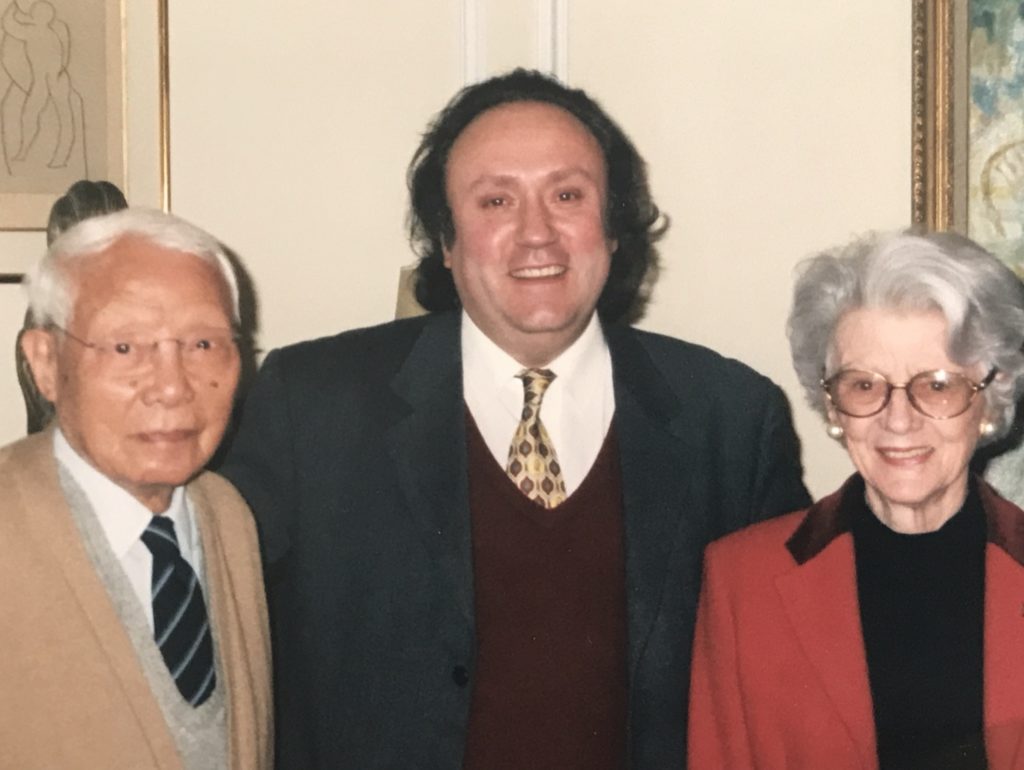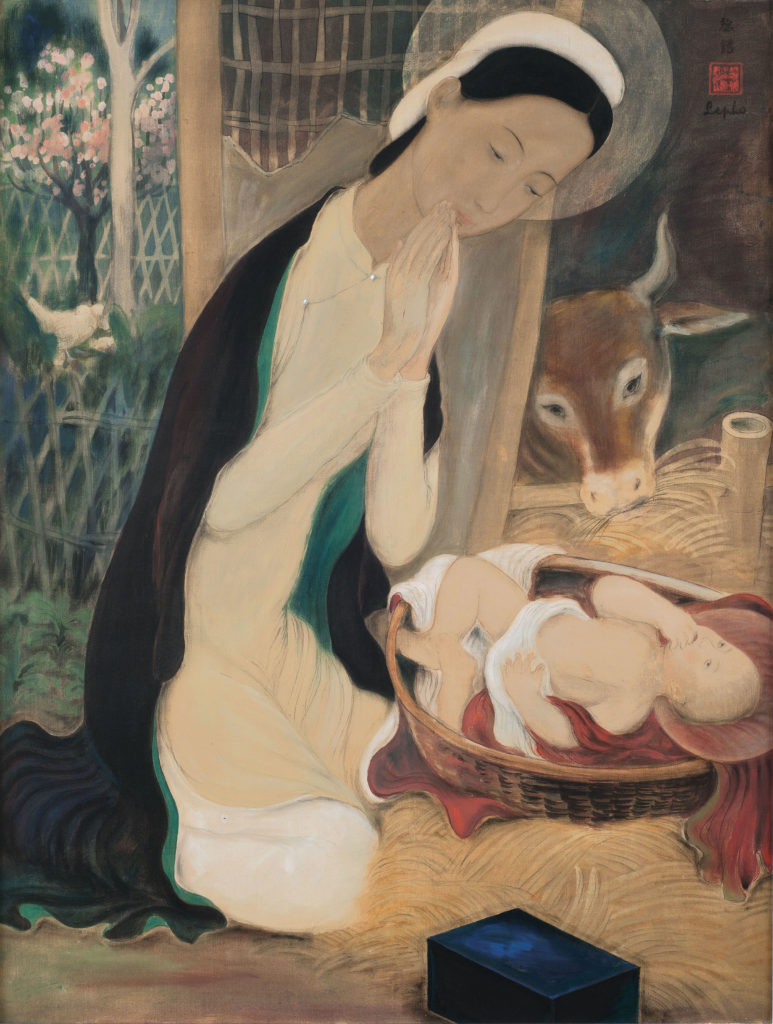Le Pho – Nativity. 1941
A visual masterpiece often arises from a positive encounter between a brilliant painter and a new historical context.
When Le Pho painted this sublime Nativity scene in 1941, he had been living in France since 1937, and was not yet aware that he would end up spending the rest of his life in Paris. Back in Hanoi, he was a brilliant student who graduated in 1930 from the Fine Art School where he was noticed by Victor Tardieu who chose him to be his assistant during the Colonial Exhibition in Paris in 1931.

Le Pho himself was a charismatic teacher at the Fine Art School in Hanoi before deciding to leave everything behind and try his luck in Paris. Paris, the City with a deep and rich history of painting, and where Picasso, Modigliani, Chagall, and Soutine among others, dead or alive, were a great source of influence and inspiration for many Vietnamese painters who had travelled there.
They would gather around Montmartre and Montparnasse – magical places where talent could be found on every street corner. Le Pho desired to make a mark for himself within art history, and along with his friends Mai Trung Thu, Vu Cao Dam, and Le Thi Luu, created a new movement of Vietnamese painters in France.
Meanwhile in Vietnam, Nguyen Phan Chanh and Nguyen Gia Tri among others, would in time, develop another school of painting that was aware of, but less engaged in the reality of the Western world, and championing the use of lacquer, gouache and ink on silk, and more classical Vietnamese art practices and themes.
In this painting, the Virgin Mary is clearly depicted in Vietnamese style. She has refined Asian features, wears the traditional Ao dai, and her hairstyle is typical of that from Tonkin and Annam. Her loosely draped scarves suggest an elegance associated with Le Pho’s ideal representations of the female form. Her prayerful hands could be ascribed to any religion as a posture of religious reflection, but the subtle halo around her head ties the figure to icons from Flemish and Italian masters such as Fra Angelico, Botticelli, Hans Baldung and Giotto Di Bondone, and strongly underlines the Christian iconography of the figure. Le Pho was exposed to these styles and icons as early as 1931 during his travels to Europe, and here paints an intriguing intersection between East and West as the infant Christ is depicted with Asian features despite his blond hair.

Other visual elements corroborate the “Vietnamisation” of the subject – for instance, the braided rush basket cradling the infant Christ is akin to the traditional baskets used by the fishermen on the coasts of Vietnam. The protective fence made of bamboo in the right background of the painting is also a widely used material in Vietnam and Asia. The box in the foreground is in the traditional style of Vietnamese lacquer boxes, but painted in a deep and emanating shade of blue – the colour most often associated with the Virgin Mary, and applied in classical art history with the brilliant pigment of lapis lazuli. Recreating other elements of the well-known nativity scene, Le Pho includes a watchful ox in the barn, as well as two doves (Christian symbols of the Holy Spirit) resting in the courtyard beyond.
In this unique work (according to the artist’s widow, Paulette Le Pho, in a private interview on 14th April, 2011), the painter achieved a height in his artistic potential. In 1941, the situation was critical, the previous year France had lost the war against Germany, and the country descended into darker times. Le Pho had bravely enlisted in the army the previous year, and felt first-hand, the intense isolation and futility of being in a war. Even as Le Pho continued to be a Buddhist, could we perhaps read this painting as a devotional prayer during a time of national and personal despair?
Le Pho would towards the end of his life, eventually convert to Catholicism, and adopted as his baptism name, that of Victor, after his revered and respected mentor, Victor Tardieu.
The nativity scene is densely compact with colour, symbols, icons, architecture, nature, figures, and animals – as if the artist wanted to use the elements of the pictorial to frame and protect the precious moment of the birth of Christ. Softly rendered in subtle tones of ink and gouache, even the ox which, according to the Christian tradition, warms the child with his breath, strikes us with its sweetness and attention. An exceptional example of Le Pho’s painterly skill as well as artistic vision, the work is certainly one of the masterpieces of Vietnamese 20th Century art.
Le Pho always showed gratitude for the circumstances of his life, and the depth of his feeling was a vital source of inspiration for his exceptional artistic work.
The great poet Cao Ba Nha captures the feeling in his poem:
The nostalgic soul wanders far away from the native home,
Tossed over the peaks and the hollows of life.
Ever ending are the rumour of the waves,
The dewdrops rustle gentle and strong.
Jean-François Hubert